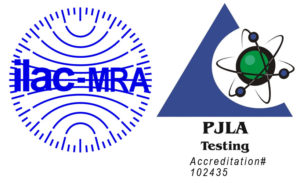A New Adhesive Joint Test Suggest Failure Unpredicted by Standard …
Food Analysis
by | SME 1998 | Publications, Food Analysis
A New Adhesive Joint Test Suggest Failure Unpredicted by Standard Test Methods
Society of Manufacturing Engineers; 1999, Issue 106, pages ALL
Conti, J.C.1, Strope, E. R., Jones, E.1
Dynatek Dalta Scientific Instruments, Fourth and Main, Galena, MO 65656
1 Department of Physics, Southwest Missouri State University
SME 1998
Abstract
Although the use of adhesives in the packaging, transportation, housing, and manufacturing markets seems to have unlimited potential, there is a problem that limits the full replacement of other fastening techniques with this bonding modality. The occurrence of unpredicted failures has plagued adhesive users for many years. One example is the use of thermally processed adhesives in the packaging industry, especially in the packaging of food and medical products. Engineering studies guide packaging developers to form seals with known peel and rupture strength. However, in the field, unpredicted packaging failures result in the need to over-design the joints of the packaging, making it nearly an impossible task to open.
A new high speed cyclic peel test has demonstrated failure modes that occurred at loads well below that predicted by standard single pull peel tests. We feel this new test, which has been demonstrated on both thermal and pressure sensitive adhesives, will give a better understanding of the durability of these adhesive joints in end-use applications.
Introduction
In order to properly address poorly defined failure mechanisms in adhesive joints, it is appropriate to reevaluate the concept of adhesion and include in the review techniques used for testing and mechanisms of failure. In physical chemistry, adhesion is defined as the attraction between a solid surface and a second phase which is usually a liquid. The magnitude of adhesion can be determined by equilibrium or quasi equilibrium measurements such as contact angles of liquids on solids. In technology, adhesion refers to the resistance to separation of a joint by mechanical means. The magnitude of this adhesion is determined by a complex set of interacting factors such as bulk and surface layer properties, joint geometry, testing rate, etc.
There are two issues that need to be addressed when evaluating adhesion. Qualitatively, why do materials when brought into contact with each other resist separation? Quantitatively, what variables come together to define the level of resistance of the separation or, in other words, the strength of the joint? Normally, the tendency for surfaces to associate or repel each other is described in terms of parameters such as surface tension and contact angle. Using these approaches to evaluate the strength of a bond, one usually considers the separation or resistance to separation as the work of adhesion. There are, of course, other issues that come into play before the actual testing or rupture of an adhesive joint. This has to do with the surface characteristics and the bulk properties of the materials when the bond is actually being formed. For instance, we must wait for a liquid adhesive to flow thoroughly onto a surface in order for the joint to be properly formed. These processes are roughly summarized as (a) flow, (b) wetting (interfacial), and (c) solidification of non-pressure sensitive adhesives.
There are currently several theories of adhesion, none of which are completely satisfying. But it is interesting to review these, since a combination of these interactions probably come together to define the total strength of the joint; therefore, an evaluation of unpredicted failures needs to consider all of the potential mechanisms of adhesion.
One of the earliest theories of adhesion suggested that adsorption, either physical or chemical, is responsible for the tendency of materials to adhere to each other. Chemical reaction theory suggests the properties of the adhesive bond result from interfacial forces, valence bonds, or van der Waals forces. The mechanical or hooking theory is one that certainly must have a certain influence on the strength of an adhesive bond, and roughly refers to the tendency that adhesive bonds formed on very rough surfaces are stronger, all else being equal, as compared to highly polished surfaces. It is easy to envision a pumice-like surface structure allowing the three- dimensional diffusion of adhesive resulting in a high surface area contact adhesive bond. Another popular and believable approach to the evaluation of adhesive bonds is the electrostatic theory. This basically suggests that the joint is a capacitor which is charged as a result of the contact of two different substances. This contact results in the formation of an electrical double layer which resists movement. The diffusion theory specifically for polymers suggests that polymer diffusion across the interface solely determines the joint strength.
Clearly, no single one of these theories can possibly explain the full strength of an adhesive joint. There are interesting pieces of information relating the strength of an adhesive joint to various properties. One finds that, in most cases, the mechanical properties of the joint itself (its ability to distribute load or dissipate energy) has a great deal to do with the adhesive joint strength.
This brings us to an interesting point in the discussion in which one can take either of two extreme positions in the evaluation of an adhesive joint. The first, the interface approach, would probably be adopted by those who are chemists. This approach would suggest that any changes in the joint’s response is directly and only due to a change in the molecular structure and chemical bonding at the interface. As a chemist, one would find this approach very satisfying. Unfortunately, in light of the reality of our experimental program, this approach doesn’t explain all of the problems or characteristics of an adhesive joint. The other approach is more associated with the bulk response, or the mechanical properties of the intact joint. As a mechanical engineer, one would find this approach somewhat more satisfying. This perspective looks at the bulk and geometric properties of the joint as the primary or sole predictor of joint strength.
The most telling feature of this whole argument is the fact that, in almost all instances, the mechanical fracture energy of an adhesive joint is greater than the intrinsic adhesion energy of that joint. The only way to explain this phenomenon is that there are processes in any joint that will distribute the load on the joint such that stress concentrations are minimized and there are dissipation processes that allow the energy put into a joint to be used in a way other than destroying the bond or joint itself.
So we arrive at a point in our discussion where it is clear that the adhesive joint which makes up a key factor in many of our medical products and packages is extremely complicated. There are at least six different theories that cover the strength of the bond, and, in addition, there are unpredicted failures in the field. Our next approach will be to evaluate the mechanisms of failure of bonds that have been, as far as we can tell ahead of time, properly designed. Keep in mind that the reason for our analysis of the problem is the desire to come up with a test that predicts failures in adhesive joints that are not predicted by normal testing.
In our experience, most properly designed adhesive joints that fail in the field do so via a peel mechanism. This occurs not only with medical devices but also with medical and food packaging. Therefore, it is important to review different testing procedures and evaluate how many of the standard tests are susceptible to failure via a peel mechanism.
It is well known that in a standard peel test the work of adhesion of an adhesive bond is a function of peel rate and bond thickness.
E=R/a
E=strain rate
R=peel rate
a=bond thickness
In general, as the peeling rate increases, the work of adhesion rises until a characteristic peel rate is attained, at which point a dramatic drop in the peel occurs. From that point on, the work of adhesion is no longer a function of the peel rate. It is assumed that it is important to go fast enough in the peel test so as to minimize load distribution and dissipation phenomena such that, at the higher rates, the constant work of adhesion versus peel rate gives us a better understanding of the intrinsic adhesion properties unencumbered by the complexities of the geometry of the properties of the joint. The problem with this approach is that, in the field, many adhesive joints are exposed to cyclic loading that occurs in a speed range that is below this critical peel rate.
Switching over to other testing techniques, one of the more common testing procedures used to evaluate the properties of adhesive joints is the lap shear sample. Interestingly, if one looks at the samples that are failing with either a sandwich sample of an elastic adherent and a non-elastic adherent, or when using two identical adherents, and one inspects the propagating failure region of the joint, one can easily envision that this process does involve a peel type mechanism. In the case of the single elastic adherent, the substrate begins to stretch, causing a necking in the region of the adhesive, and this necking results in a motion orthogonal to the surface of the inner-elastic adherend, resulting in a peel type motion. When looking at two identical elastic adherends, it is most common for the ends of the lap joints to curl away from the plane of the adhesive, thereby also imparting a load perpendicular to the adhesive.
It is interesting to note that the breaking force of a lap shear joint is independent of the length of the overlap. While counterintuitive, this is a common concept in manufacturing engineering. Also, the breaking force depends upon the tensile modulus of the adherends and upon the thickness of the adherends, but not on the thickness of the adhesive.
Cleavage failure of a joint composed of two stiff adherends pulled apart can also be seen involving a peel failure.
Lastly, in the failure mechanism of a tapered, double cantilevered beam used for fracture mechanics, there is a progressive failure of the joint along its length which certainly possesses peel characteristics.
In summary:
(1) Bonds obey an energy criterion for failure.
(2) Any mechanism for dissipating energy will contribute to the observed
bond strength.
(3) Failure loads for bonded joints depend upon the stiffness, the bond strength,
and the geometry.
(4) Strong chemical bonds are desirable, but are not necessary for strong adhesion.
(5) Many actual failure samples demonstrate a peel mechanism during
the disassembly of the adhesive joint.
Based upon an analysis of the standard tests and the observation of the failed medical devices and packages from the field, a further investigation into peel itself was indicated. A paper by Aubrey and Sheriff (1) indicated that there were actually four different modes of peel failure:
(1) Peeling with viscous adhesive response.
(2) Peeling with rubbery response.
(3) Oscillatory or slip stick peeling.
(4) Peeling with glassy adhesive response.
They found that the transitions between different modes were quite abrupt. They also found a relationship between the peel force and the dynamic storage modulus. This suggests an interesting relationship between the dynamic properties of the adhesive, and probably also the adherents, and the tendency for a joint to peel, regardless of the mode that is used. Mayer et al. (2, 3) published a series of papers looking at the relationship between peel adhesion and various dynamic mechanical properties. Their conclusion was that there was a relationship between the work of adhesion of a joint and the loss modulus of the adhesive.
A review of all of this information and an analysis of the loading environment of failed samples led to the postulate that single pull controlled rate peel tests, which are standard in the industry for evaluating the strength of adhesive joints, does not replicate the loading conditions that that joint will experience in the field, whether it be a package, or an artificial heart.
Our first attempt at reevaluating how an adhesive joint might be more realistically tested came from our experience with building instruments and designing protocols for the cyclic testing of cardiovascular medical products. In this field, it is very important to replicate the loading that the product will feel in vivo and increase the test rate as much as possible while carefully monitoring parameters such as peak loading each cycle.
Experimental
In our first paper (4), we chose to compare the cyclic versus the single pull peel test when evaluating the failure of a pressure sensitive adhesive. In this example, 40 samples of a commercially available peelable pressure sensitive adhesive (Post-it ® Notes) were subjected to a 90 degree angle peel test. The testing was carried out under stroke control on a micromechanical tester of our design, and the peel rates were between 0.1 and 0.5 mm per second. Total displacement in these samples varied from 1 to 5 mm. An analysis of the first yield point indicated that the bond did not begin to peel until it was loaded to 11.6 grams, ± 3.9 grams. Once the load to first yield of the joint was established, 30 samples were identically prepared as those used in the single pull test. These samples, however, were subjected to cyclic loading instead of a single pull test. The cyclic loading was very similar to the loading that the Post-it note would experience when hanging on your refrigerator, for example. In each case, the sample was tested by exposing it under load control to a 0 to 6 grams sinusoidal load, at different testing frequencies. This load range was chosen to ensure testing below the first yield point as determined in the single pull section. All of the samples were tested at 2, 4 and 8 Hz.
In spite of loading these samples below the level required by the single pull test, in each case separation began within 3,000 cycles. All samples fully failed according to the criteria used in the single pull test within 30,000 cycles.
After reviewing this information with a packaging engineer who had worked on a new metalized Mylar potato chip bag, he suggested that this could be a useful test in food packaging, since they had many unpredicted failures using seal strengths that were evaluated using standard peel tests. In this case, they finally reverted to shipping samples across the country by truck or airplane to determine if the samples would arrive at their final location intact. Based upon this information, a second set of experiments was initiated using 63 samples of Lay’s Potato Chip bags in which the top, bottom, and back seals were cut into 4 mm strips such that the seal had 2 cm long legs projecting from it. These seals were tested in 180 degree peel mode under stroke control at a peel rate of 1 mm per second.
In general the load to first yield of the seals varied from 51 to 88 grams depending upon the location of the seal. Interestingly, the seal strength varied by the type of potato chip that was located in the bag, although probably different sealing machines were responsible. An additional 60 samples from these potato chip bags were mounted on the same tester. In this case, as before, the samples were cyclically loaded from zero to 40 grams at a frequency of 8 Hz. Again, these samples were loaded at a level well below that shown to be the load at first yield using single pull testing. Failure of these seals resulted in every case within several thousand cycles.
These experiments indicate that standard single pull peel testing at 90 degrees or 180 degrees, and at different pull rates, did not predict the failure of the seals once they were exposed to cyclic loading and actual field use. It is possible that repeated stressing is responsible for at least some of the unpredicted product or packaging failures encountered by manufacturers. Such unpredictability requires engineers to over-design adhesive joints in their products or packaging seals. It is our conclusion that comprehensive testing of packaging and product seals involving adhesive joints should include an evaluation of cyclic peel properties so as to reduce the occurrence of unpredicted failures.
References
1. D.W. Aubrey and M. Sheriff, J. Polymer Sci., Polymer Ed. 18 , 2597 (1980).
2. A. Mayer, T. Pith, G. Hu and M. Lambla, J. Polymer Sci. Part B: Polymer Physics, 33, 1781 (1995).
3. Ibid. 33, 1793 (1995).
4. J.C. Conti, E. R. Strope, and E. Jones, Proceedings of the 20th Annual Meeting of the Adhesion Society, 425-427 (1997).
5. J. C. Conti, E. Jones, E. Strope, and D. Rohde, Proceedings of the 21st Annual Meeting of the Adhesion Society, 418 (1998).



